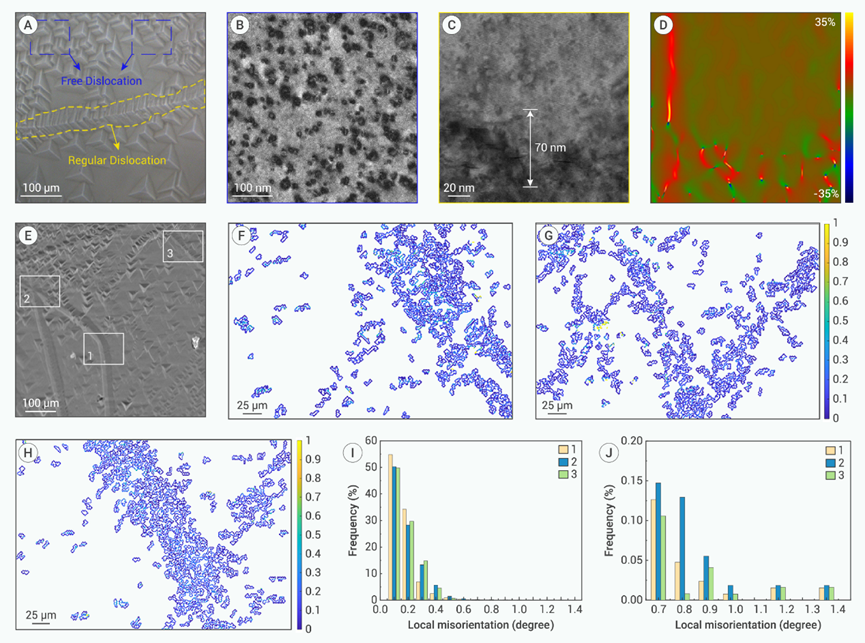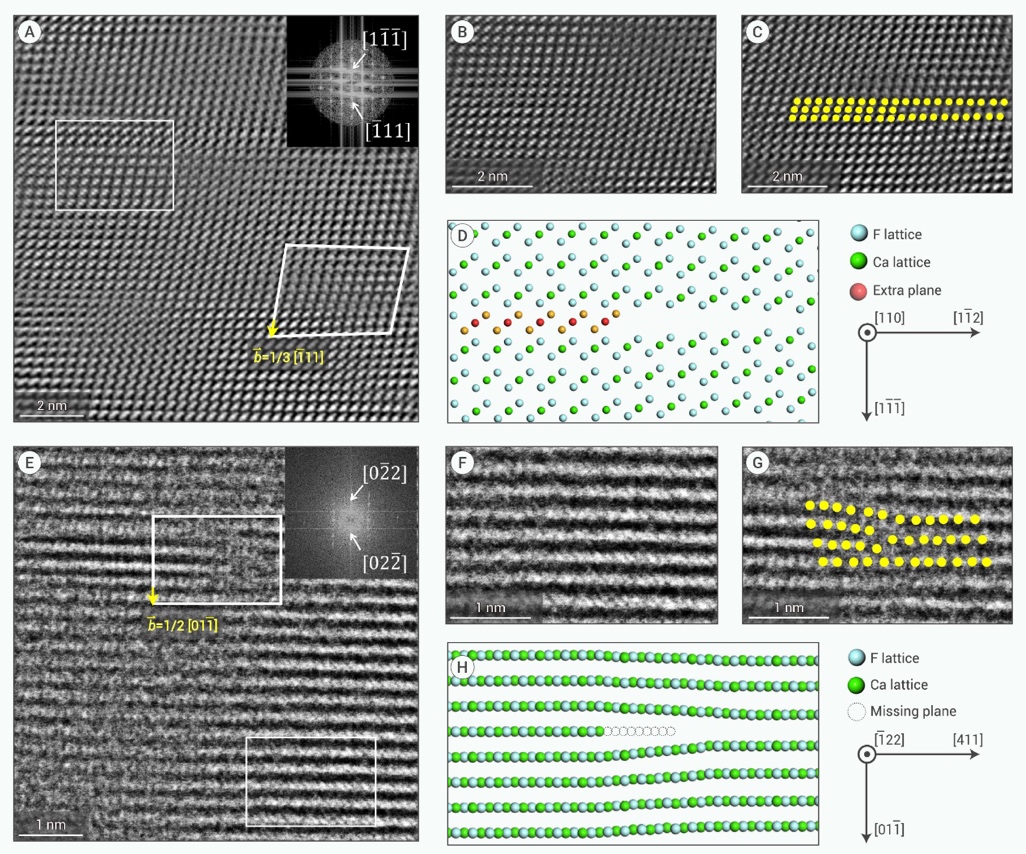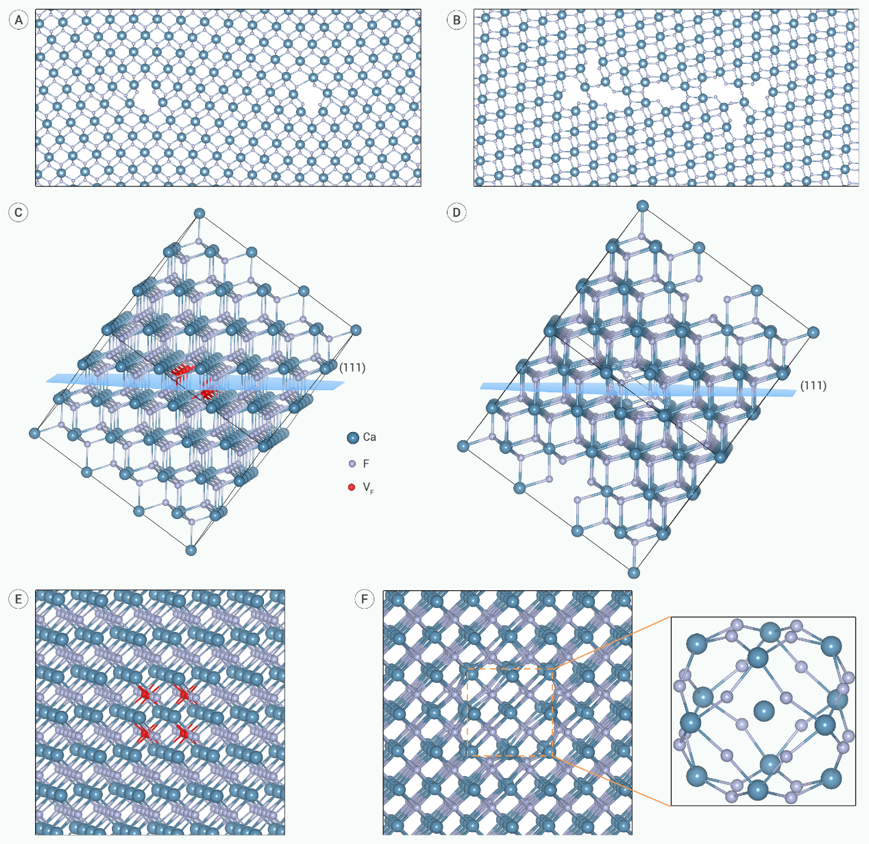Important Advances in Calcium Fluoride Crystal Defect Research at the Shanghai Institute of Ceramics, Chinses Academy of Sciences
Calcium fluoride (CaF2) crystals are essential components in high-end applications such as ultraviolet lithography, high-resolution space cameras, and precision optical inspection devices. Their wide transmission wavelength range, low dispersion effect, and robust resistance to laser damage make them particularly valuable. However, the open cubic structure of CaF2 results in half of the octahedral voids remaining unoccupied, leading to a dislocation density of 105/cm² that significantly impacts performance. Consequently, accurately identifying, analyzing, and controlling dislocation defects within these crystals represents a critical breakthrough necessary for achieving near-theoretical limit performance and fulfilling stringent application requirements.
The sensitivity of F⁻ ions to electron beams has historically posed substantial challenges for atomic-level characterization of dislocations in CaF2 crystals. Traditional characterization techniques have struggled to resolve dislocation configurations or elucidate their formation mechanisms effectively. To overcome these limitations, a research team led by Professor Liangbi Su from the National Key Laboratory of Functional Crystals and Devices collaborated with another team headed by Professor Yi Zeng from the Testing Center to innovatively develop a multi-scale combined characterization system comprising "chemical etching - high-resolution electron backscatter diffraction (HR-EBSD) - integrated differential phase contrast scanning transmission electron microscopy (iDPC-STEM)." By implementing a high-resolution EBSD technique based on the Kikuchi line rotation compensation algorithm, they successfully addressed the precision shortcomings associated with conventional EBSD methods. When combined with chemical etching processes, this approach enabled precise localization and characterization of minute orientation differences among both "freely distributed" and "regularly aggregated" dislocations within the crystal structure (as illustrated in Figure 1).Further, by employing the ultra-low-dose iDPC-STEM technique, we have directly resolved the atomic-scale arrangement of F/Ca atoms for the first time and clearly captured the true configuration of dislocations (as illustrated in Figure 2). This technological advancement has transcended the limitations of traditional characterization methods, enabling a comprehensive analysis of dislocations from macroscopic to atomic scales. It provides crucial experimental evidence for elucidating the formation mechanism of dislocations in CaF2 crystals.
By integrating crystal growth experiments, first-principles calculations, and structural characterization techniques, we have unveiled the formation mechanism of dislocations in CaF2 crystals. Our findings indicate that an excessively large temperature gradient induces lattice mismatch, thereby promoting dislocation formation. Furthermore, we clarified at an atomic scale the causal relationship between preferential vacancy aggregation and Frank partial dislocation nucleation (as depicted in Figure 3). Based on these insights, strategies for suppressing or reducing dislocation defects were proposed. The feasibility of "dislocation self-regulation" was validated through heat treatment experiments that successfully reduced the dislocation density in CaF2 crystals from 105 cm-2 to levels around 103 cm-2. This presents a practical pathway toward achieving low-defect or even "near-perfect" CaF2 crystals.
This research not only addresses the long-standing scientific challenge associated with attaining "atomic-scale resolution" regarding defects in CaF2 crystals but also establishes a comprehensive cognitive framework spanning macroscopic to mesoscopic and atomic-scale defects. It provides essential scientific foundations for preparing near-theoretical-limit-performance crystals. The related results were published in "The Innovation Materials," under the title "Revealing the Atomic-Scale Structures of Dislocations in Calcium Fluoride Single Crystal." (The paper link is: https://doi.org/10.59717/j.xinn-mater.2025.100129). Researcher Liangbi Su and Associate Researcher Bo Zhang from the Shanghai Institute of Ceramics serve as co-corresponding authors, while Senyang Li, a master's student who graduated in 2022, is the first author.
This research was supported by the National Key Technologies R&D Program (2022YFB3605701), the National Natural Science Foundation of China (61925508), CAS Project for Young Scientists in Basic Research (YSBR-024) and Instrument Developing Project of CAS (ZDKYYQ20210002).

Figure1. Analysis of the morphology, distribution and orientation difference of dislocations in CaF2 crystals

Figure 2. The atomic-scale structure and defect configuration of dislocations in CaF2 crystals

Figure3. Supercellular modeling analysis of dislocation core structure and fluorine vacancy evolution



